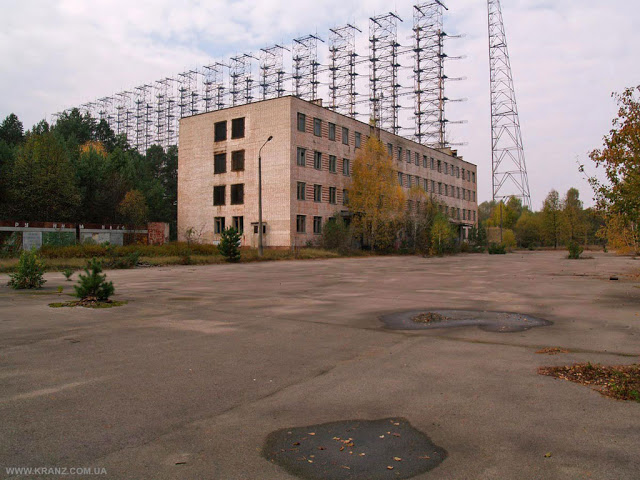(Source: CNN Travel via Heath Hall)
(CNN) — The peaceful untouched forest north of Ukraine’s capital, Kiev, is a perfect spot to enjoy the outdoors — save for one fact.
It contains the radiation-contaminated Chernobyl Exclusion Zone, established in 1986 after the world’s worst nuclear disaster sent a wave of radiation fallout across Europe.
Since 2011 it’s been a major draw for adventurous tourists, but the forests here conceal another legacy of the Cold War, with a far more sinister and mysterious reputation.
The Duga radar.
Though once a closely guarded secret, this immense structure can be seen for miles around, rearing up through the mist over the horizon — a surreal sight.
From a distance, it appears to be a gigantic wall. On close inspection, it’s an enormous, dilapidated structure made up of hundreds of huge antennas and turbines.
The Duga radar (which translates as “The Arc”) was once one of the most powerful military facilities in the Soviet Union’s communist empire.
It still stands a towering 150 meters (492 feet) high and stretches almost 700 meters in length. But, left to rot in the radioactive winds of Chernobyl, it’s now in a sad state of industrial decay.
Anyone exploring the undergrowth at its feet will stumble upon neglected vehicles, steel barrels, broken electronic devices and metallic rubbish, the remainders of the hasty evacuation shortly after the nuclear disaster.[…]
Click here to continue reading the full article and explore the photo gallery at CNN Travel.


This should be turned into a tourist site. when Chernobyl cools down decontaminate it, clean it up. A good DXexpedition site, even a choice Field day site.
What are the secrets?
Such radars were and are in many countries. The only feature of Arc is the ambitiousness of the task and the corresponding antenna size. And when they write that all the documentation is destroyed and no one knows what’s what – even strange. In Ukraine, not far from the city of Nikolaev, there was a branch of NIIDAR (Moscow Institute of Long-Range Radar). There was also an antenna system similar to the Chernobyl “Arch”.
https://drive.google.com/open?id=0B7Tnu7vazXXFVkJuZHNsVk15QU0
https://drive.google.com/open?id=0B7Tnu7vazXXFQVpHdDRoNTVXVUU
In this whole story, only one moment seems strange. It is not clear to what fool the idea came to send a short-wave radar beyond the horizon so that the emitted and received signals would cross the high-latitude auroral zones? The unpredictability of the passage of radio waves through these zones reduced to zero the value of this radar. And that is why it was decided to build the same in the Far East. It was built, but by that time the USSR had already been sold by Gorbachev. The object simply became useless for everyone and was destroyed as Chernobyl.
https://en.wikipedia.org/wiki/Over-the-horizon_radar
http://www.iarums-r1.org/iarums/radar-2012.pdf
This was also featured on the SCI channel’s “Mysteries of the Abandoned.” There’s a clip on the show’s webpage. “The Duga – Entwined with Chernobyl’s Fate” is the name of the clip. You can probably see the whole show episode on thd site as well. Quite interesting…
As powerful as that signal was here in the US, I can only imagine what people in nearby towns had to deal with. It must have been almost impossible to listen to anything on a landline telephone, never mind a radio.